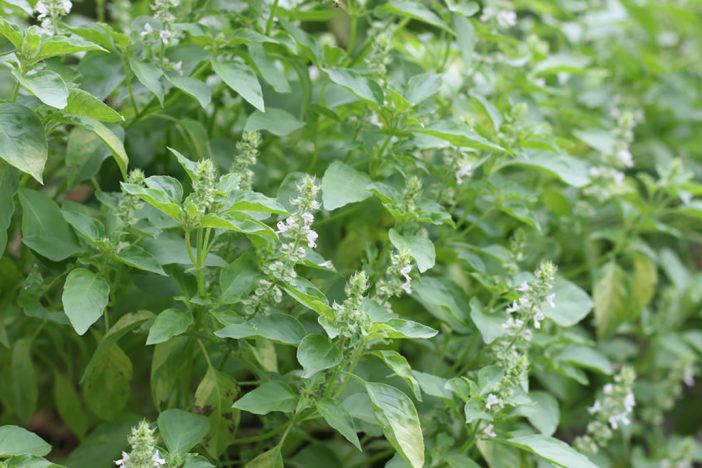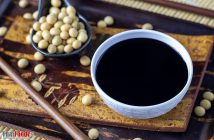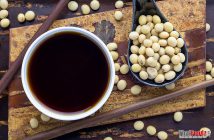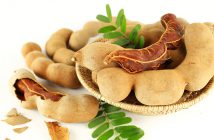The leaves of the lemon basil are used extensively with Isan (northeastern) and Lanna (northern) Thai foods to add fragrant lemon scent.
Lemon basil or mang luk in Thai, Ocimum x citriodourum, is one among 3 types of basil used in Thai cuisine, especially with Isan (northeastern) and Lanna (northern) Thai food styles. It is an annual bushy crop with multi light green stems. Its leaves, having citrus scent and flavour, are quite similar to Thai basil, but having light green colour and smaller size and are fragile and bruise easily. It is used to be called hoary basil since having white hairs cover leaf stalks and shoots. Its flowers are in a form of a thyrse. Its inflorescence is light green, and when opening, the flowers are white and when drying, they leave the black seeds.
Lemon basil leaves are often used in many dishes, especially with Isan (northeastern) and Lanna (northern) Thai foods such as hor mok, i.e. curry fish custard, kaeng aom, i.e. a type of curry without coconut milk, kaean liang, i.e. a spicy soup with various vegetables, etc. and usually added at the end of the cooking time. Lemon basil leaves are also eaten in fresh form, especially khanom chin, Thai vermicelli, usually accompanied by curries and vegetables, also often has the lemon basil leaves enhance its flavour.
For the lemon basil seeds, after being soaked in water, the lemon basil seeds are high in mucilage covering the seeds, resembling frogs’ eggs. The hydrated lemon basil seeds are used exclusively in desserts and drinks. At any dessert stalls selling assorted shave-ice treats, a combination of a couple components such as muskmelon, jack fruit, cooked kidney bean, palm seeds in syrup, etc. and some crushed ice in sweetened coconut milk (always perfumed with jasmine flowers), are very popular in Thailand. Hydrated lemon basil seeds are also good choices among those.





